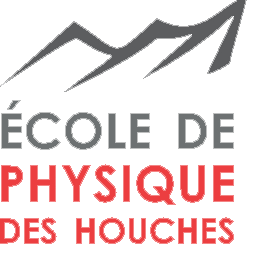Speaker
Description
The coupling of ions stored in different traps through the charges they induce in a common electrode was proposed in Ref. [1], but it has not been
accomplished yet. The completion of such a system would be an outstanding technological breakthrough in quantum electronics and would pave the
way for the implementation of hybrids systems for quantum information [2]. A pioneer work using radio-frequency traps started at the UC Berkeley several
years ago (see e.g. [3]). With the same technical objective, but now using 7-T Penning traps we started to build the TRAPSENSOR facility at the University of Granada in 2012.
The first scientific aim envisaged is to perform high precision mass spectroscopy utilizing a single, laser cooled, calcium ion as a sensor [4,5]. This will overcome the tradeoffs among precision, number of ions used in the measurement and sensitivity to the target-ion's mass-to-charge ratio existing in current techniques.
To achieve this, the first outstanding goal is to measure the energy transfer between Doppler-cooled ions ($\langle n \rangle \sim 1000$ phonons) stored in different traps [6].
In this contribution we will present the full facility, report on the status of this singular experiment, and present the results obtained in two ion-trapping platforms. The ongoing
work with prospects to reach the single energy quanta exchange level ($\langle n \rangle = 0$) will be also outlined.
[1] D.J. Heinzen and D.J. Wineland, Phys. Rev. A 42, 2977 (1990).
[2] S. Kotler et al., Phys. Rev. A 95, 022327 (2017).
[3] N. Daniilidis et al., J. Phys. B 42, 144012 (2009).
[4] D.Rodriguez, Appl. Phys.B: Lasers O. 107, 1031 (2012).
[5] F. Dominguez et al., Sci.~Rep. 7, 8336 (2017).
[6] J.M. Cornejo et al., Int. J. Mass Spectrom. 410 , 22 (2016).
